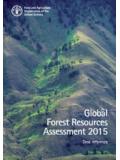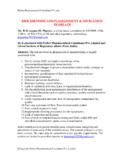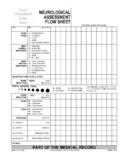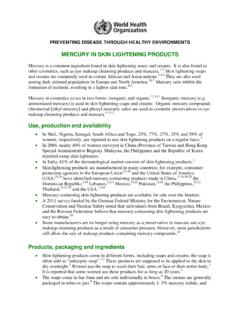Transcription of The use of the WHO-UMC system for standardised …
1 The use of the WHO-UMC system for standardised case causality assessment - 1 - The use of the WHO-UMC system for standardised case causality assessment Why causality assessment ? An inherent problem in pharmacovigilance is that most case reports concern suspected adverse drug reactions. Adverse reactions are rarely specific for the drug, diagnostic tests are usually absent and a rechallenge is rarely ethically justified. In practice few adverse reactions are certain or unlikely ; most are somewhere in between these extremes, possible or probable . In an attempt to solve this problem many systems have been developed for a structured and harmonised assessment of causality (1). None of these systems, however, have been shown to produce a precise and reliable quantitative estimation of relationship likelihood.
2 Nevertheless, causality assessment has become a common routine procedure in pharmacovigilance. The advances and limitations of causality assessment are reviewed in Table 1 (2). Table 1. Advances and limitations of standardised case causality assessment What causality assessment can do What causality assessment cannot do Decrease disagreement between assessors Give accurate quantitative measurement of relationship likelihood Classify relationship likelihood Distinguish valid from invalid cases Mark individual case reports Prove the connection between drug and event Improvement of scientific evaluation; educational Quantify the contribution of a drug to the development of an adverse event Change uncertainty into certainty The WHO-UMC causality assessment system The WHO-UMC system has been developed in consultation with the National Centres participating in the Programme for International Drug Monitoring and is meant as a practical tool for the assessment of case reports.
3 It is basically a combined assessment taking into account the clinical-pharmacological aspects of the case history and the quality of the documentation of the observation. Since pharmacovigilance is particularly concerned with the detection of unknown and unexpected adverse reactions, other criteria such as previous knowledge and statistical chance play a less prominent role in the system . It is recognised that the semantics of the definitions are critical and that individual judgements may therefore differ. There are other algorithms that are either very complex or too specific for general use. This method gives guidance to the general arguments which should be used to select one category over another. The various causality categories are listed in Table 2.
4 The original descriptions and an explanation are presented under Definitions (3). In Table 2 the assessment criteria of the various categories are shown in a point-wise way, as has been developed for practical training during the UMC Training Courses. The use of the WHO-UMC system for standardised case causality assessment - 2 - Table 2. WHO-UMC causality Categories causality term assessment criteria* Certain Event or laboratory test abnormality, with plausible time relationship to drug intake Cannot be explained by disease or other drugs Response to withdrawal plausible (pharmacologically, pathologically) Event definitive pharmacologically or phenomenologically ( an objective and specific medical disorder or a recognised pharmacological phenomenon)
5 Rechallenge satisfactory, if necessary Probable / Likely Event or laboratory test abnormality, with reasonable time relationship to drug intake Unlikely to be attributed to disease or other drugs Response to withdrawal clinically reasonable Rechallenge not required Possible Event or laboratory test abnormality, with reasonable time relationship to drug intake Could also be explained by disease or other drugs Information on drug withdrawal may be lacking or unclear Unlikely Event or laboratory test abnormality, with a time to drug intake that makes a relationship improbable (but not impossible) Disease or other drugs provide plausible explanations Conditional / Unclassified Event or laboratory test abnormality More data for proper assessment needed, or Additional data under examination Unassessable / Unclassifiable Report suggesting an adverse reaction Cannot be judged because information is insufficient or contradictory Data cannot be supplemented or verified * All points should be reasonably complied with The use of the WHO-UMC system To illustrate how the system works, we suggest to first make a comparison of the criteria and wording of Probable and Certain.
6 First of all there is one more criterion in the category Certain , the fourth: Event definitive pharmacologically or phenomenologically , an objective and specific medical disorder or a recognised pharmacological phenomenon (for instance grey baby syndrome and chloramphenicol, or anaphylaxis immediately after the administration of a drug that had been given previously). This means that any other event is automatically excluded and can never qualify for Certain (even in the case of a positive rechallenge observation). For Certain , rechallenge information with a satisfactory outcome is requested ( what has happened when the drug was first stopped and later on resumed), unless the evidence in the report is already convincing without a re-exposure.
7 For Probable , on the other hand, a rechallenge is not required. To qualify as Certain the interval between the start of the drug and the onset of the event must be plausible ; this means that there is in sufficient detail a positive argument in support of the view that the drug is causally involved, pharmacologically or pathologically. For Probable the time relationship should be reasonable ; this is a more neutral term covering everything that is not unreasonable. Also, with regard to the second criterion, alternative causes , the wording is different in Probable . For Certain the occurrence of the event cannot be explained by any disease the patient is known to The use of the WHO-UMC system for standardised case causality assessment - 3 - have or any other drug taken.
8 For Probable , on the other hand, the event is unlikely to be attributable to another cause. Also the dechallenge situations ( what happened after stopping) are different. In a Certain case report, the course of events constitutes a positive argument in favour of holding the suspected drug responsible, in pharmacological or pathological respects, whereas in a Probable case it is sufficient if it is clinically reasonable ( not unreasonable). The essential distinctions between Probable and Possible are that in the latter case there may be another equally likely explanation for the event and/or there is no information or uncertainty with regard to what has happened after stopping. The criteria that may render the connection Unlikely are firstly the time relationship is improbable (with the knowledge at the time), and/or another explanation is more likely.
9 The term Unclassified / Conditional is of a preliminary nature and is appropriate when, for a proper assessment , there is more data needed and such data are being sought, or are already under examination. Finally when the information in a report is incomplete or contradictory and cannot be complemented or verified, the verdict is Unclassifiable . Since by far the most frequent categories in case reports are Possible and Probable , the usual approach to using the system is to choose one of these categories (depending on the impression of the assessor) and to test if the various criteria fit with the content of the case report. If the report seems stronger one can go one step higher ( from Possible to Probable ), if the evidence seems weaker one should try a lower category.
10 To see if that category is the right one or if it does again not seem to fit, the next adjacent term is tried. For drug-drug interactions the WHO-UMC system can be used by assessing the actor drug, which influences the kinetics or dynamics of the other drug (which has usually been taken over a longer period), in the medical context of the patient. How does it work? How the WHO-UMC causality assessment system can be used will be illustrated with the aid of a few real-life case reports. These will be made available on the UMC website in the near future. 1. Meyboom RHB, Royer RJ. causality Classification in Pharmacovigilance Centres in the European Community. Pharmacoepidemiology and Drug Safety 1992; 1:87-97. 2. Meyboom RHB.















